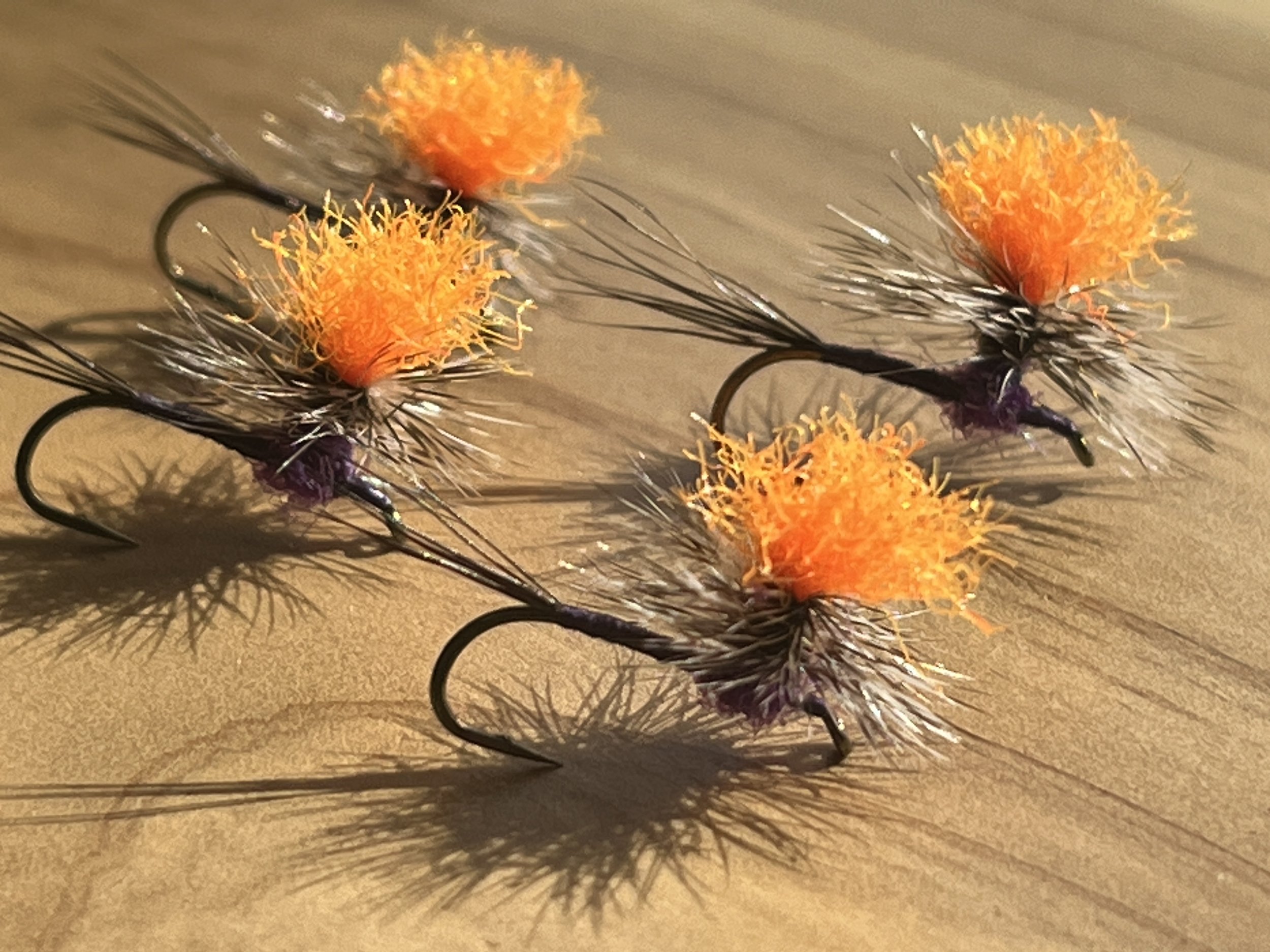Yosemite Dry Flies
Yosemite is home to five species of trout (rainbow, golden, brown, brook & cutthroat). All but rainbow trout were introduced starting in the late 1800s.
I’m often asked, “what dry flies work?” So, here is a list of dry flies I always keep in my fly box.
Parachute Adams
Probably the most popular trout fly pattern, rivaling the Elk Hair Caddis.
I prefer these in the spring and early summer on the Merced and smaller creeks throughout the Sierra Nevada. I also use them at high alpine lakes throughout the summer.
Mimicking a Callibaetis mayfly, I fish these with a drag-free drift to imitate a fly floating naturally in the current as if it were dead (spent) on rivers and give them a tug every now and then on lakes.
A Note about Roll Casting
The roll cast is a Sierra fisher’s best friend. Smaller creeks have lots of pocket water, and the roll cast provides stealth, accuracy, and casting in tight areas where tree branches, bushes, or rocks don’t allow for an overhand cast. A good roll caster has great success in the rivers and streams here in the Sierra Nevada.
I have clients cast short and “hunt” for trout. The fisher should begin with just the leader on the water, with very little flyline out of the eye of the rod. Start near the moving water and eventually move toward the still water, continuing to hunt for fish. After fishing the closest water to you, begin to let out more flyline and cast as far as you’re comfortable. You may have to resort to the roll cast the entire stretch of a river or a stream because you simply cannot overhand cast. Your roll casting should focus on accuracy and finesse so the fly lands softly on the surface of the water and the leader lands without slapping or spooking the fish.
Elk Hair Caddis
A classic dry fly pattern from 1957 by Al Troth of Dillion, Montana.
I use size 14 and size 16 in tan, brown, olive-green, and black. Fish them upstream with a dead drift or try casting them in turbulent, fast water and you’ll be surprised how many fish will strike. You can also skate them across riffles and currents with fast action on the surface. Alpine lakes? Yes.
If you have fished with me then you know I love Kaufmann’s Stimulator in size 10. I fish the Stimulator exactly like I would fish an Elk Hair Caddis.
Carlson’s Purple Haze
Carlson’s purple haze is just a Parachute Adams that’s purple and known as an attractor pattern. I fish them like an Adams and tie them with purple thread for a slim body and with Hareline’s Ice Dubbing in UV purple for a wider body.
Golden trout in high elevation lakes absolutely love these early in the morning when the sun begins to hit the water.
Mercer’s Missing Link
Mike Mercer has spent a lifetime fishing the Sierra Nevada. I began fishing this fly in 2017 and absolutely loved it. It has become one of my favorite fly patterns for the Sierra.
The Missing Link represents both caddis and Callibaetis and I fish it in size 14 and size 16. It’s also a great searching pattern when there is no active hatch occurring and you’re not sure what to tie on.
This is a great video from Oregon Fly Fishing Blog of Jim Sens tying the Missing Link.
Sparkle Dun Variation
My good friend David Gregory introduced me to this pattern a few years back and fishes them all summer here on the western Sierra rivers.
There are many versions of this fly, and this is the one I tie using Krystal Flash as a wing and parachute post, giving it lots of sparkle and making it easy to see. I tie it in size 16 for friends but love fishing it in size 18.
Blue-Winged Olive (BWO)
The Blue-Winged Olive hatch is perhaps one of the greatest experiences to fish on the western Sierra rivers. When the day warms there can be an explosion of this mayfly that feeding fish go crazy over.
I tie this fly with a Z-Lon shuck and wing along with deer hair tied in comparadun style. I find it easy to see in size 16 but prefer to fish the BWO in size 18 or smaller, which can be difficult to see at times. In that case, you know the general area of the fly, so if you see a fish hitting on the surface, set the hook immediately.
Pinch your barbs,
Greg





